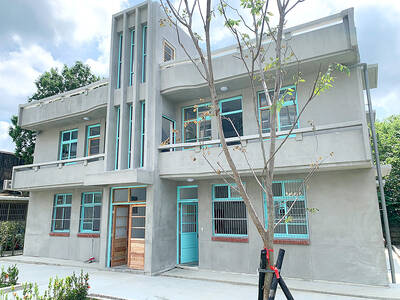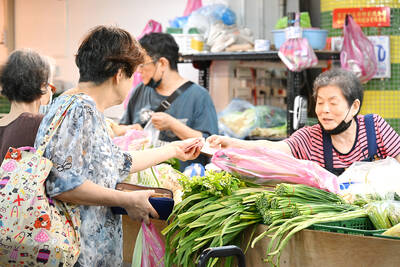What Mao Zedong and China in the Twentieth-Century World in essence represents is an attempt to rehabilitate Mao Zedong (毛澤東), at least in part, following the catastrophic plunge in his reputation over the last 20 years, both internationally and within China. Subtitled “A Concise History,” it’s written in the form of a biographical narrative, with regular excursions intended to illuminate the background situation at the time. The style is succinct and lucid, and when the author refers to the student classes at New York University on which she tried out versions of the material, you begin to understand that the book is probably intended for similar students in the future.
When Rebecca E. Karl refers in her title to “the 20th century world,” what she’s asking us to do is view Mao against the backdrop of his own times, not of ours. Today, she argues, the world is divided between proponents of what’s claimed to be capitalist freedom and its largely totalitarian enemies. But 50 years ago there were other options available, she believes, primarily an optimistic belief in the possibility of peaceful progress and social improvement following a socialist model.
Before reading this book I’d been warned to expect something of an intransigent, ideology-laden lecture. But this was not what I found. By and large, it seems to me a reasonably balanced, clear-headed survey of the Great Helmsman’s career and influence. It’s certainly not a belated attempt to counter Jung Chang and Jon Halliday’s Mao: The Unknown Story (reviewed in the Taipei Times on Jan. 8, 2006), even though that was a book that contained not a single sentence in Mao’s favor. (Karl mentions it in her first sentence, but it’s significantly absent from her bibliography.)

There are certain tests that can be applied to a book with aims such as this one’s. Three of them are as follows: First, what does it have to say about China’s 1950 annexation of Tibet? Second, what does it have to say about the Great Famine? And third, what is its approach to the Cultural Revolution? All three topics are sticks with which Mao’s critics have been more than happy to assault him in the past.
The author can be said to fail the first of these tests, pass the second by a narrow margin, and be at her most provocative on the third.
Tibet is scarcely mentioned, and China’s invasion not at all. The Famine is acknowledged, but with the number of deaths, according to “most responsible demographic estimates,” put at 15 million to 20 million. In his recent book Mao’s Great Famine (reviewed in the Taipei Times on Sept. 9), Frank Dikotter tentatively put the figure at 45 million, and perhaps more.
But it’s the Cultural Revolution that gets the most revealing treatment. It is as if it’s the author’s trump card, and she plays it with panache. The book’s opening remarks speak of her intention to take the phenomenon “seriously.” The movement, she eventually says, can be compared with the 1960s in Western countries. In both China and the West, she declares, it was an era of creativity and healthy rebellion against old norms, and essentially a new dawn.
The problem with this is that although in 1967 students in Western countries could certainly be seen brandishing Little Red Books, there was nothing Marxist about the hippies, and it was they who most characterized the era. Their so-called “counter-culture” was based on Buddhism, pacifism and free love, and a general turning away from money-making and the work ethic in favor of “cosmic consciousness.” The Red Guards didn’t stand for anything remotely comparable, and though professor Karl might enjoy reminding her students of the heady times enjoyed in earlier decades, in making the comparison she risks masking the true extent of the Red Guards’ lethal actions.
To be fair, she goes on to catalog some of these brutal acts, and even declares the movement as a whole to have been a failure. Nonetheless, she writes, “the many memoirs published in retrospect also make clear that, within the cruelty and violence, the Cultural Revolution was at times also an exhilarating, liberating and optimistic period.”
It’s very hard to agree with this charitable assessment. Even so, by and large this book presents what seems like a fair-minded portrait of the Chairman. The author, while seeing him as the dominant Chinese figure of his era, doesn’t, for example, downplay his womanizing, his purges (in, say, the “Futian Incident”), the persecution of Hu Feng (胡鳳), or the treachery involved in the “100 Flowers” episode. The Great Leap Forward was characterized by “lies,” she tells us.
She’s also skeptical of the more extravagant claims made for the Long March, points out that the steel produced by the backyard furnaces was “unusable in any form,” states that the Mao cult “was to have disastrous consequences,” and at one point even admits that “Mao’s personal dictatorial style came to have more and more destructive effects.”
This book, then, while no hatchet-job, is no whitewash either. It probably doesn’t aim to be a major reassessment, but is instead something in the manner of a student handbook. As such it contains no real treatment of primary sources, merely transcriptions of passages from a few interviews the author conducted with survivors of the period in China and Japan, none of them very revealing.
It may just be, of course, that the writer is trying to put an acceptably smiling public face on what is in reality a far tougher and more intractable intellectual position. But that is not the feeling generally conveyed. On the whole, if I had a class of young students approaching the period for the first time, I’d consider this book a not inappropriate textbook to hand them. And by the same measure it can also be recommended to the educated general reader.

June 2 to June 8 Taiwan’s woodcutters believe that if they see even one speck of red in their cooked rice, no matter how small, an accident is going to happen. Peng Chin-tian (彭錦田) swears that this has proven to be true at every stop during his decades-long career in the logging industry. Along with mining, timber harvesting was once considered the most dangerous profession in Taiwan. Not only were mishaps common during all stages of processing, it was difficult to transport the injured to get medical treatment. Many died during the arduous journey. Peng recounts some of his accidents in

“Why does Taiwan identity decline?”a group of researchers lead by University of Nevada political scientist Austin Wang (王宏恩) asked in a recent paper. After all, it is not difficult to explain the rise in Taiwanese identity after the early 1990s. But no model predicted its decline during the 2016-2018 period, they say. After testing various alternative explanations, Wang et al argue that the fall-off in Taiwanese identity during that period is related to voter hedging based on the performance of the Democratic Progressive Party (DPP). Since the DPP is perceived as the guardian of Taiwan identity, when it performs well,

A short walk beneath the dense Amazon canopy, the forest abruptly opens up. Fallen logs are rotting, the trees grow sparser and the temperature rises in places sunlight hits the ground. This is what 24 years of severe drought looks like in the world’s largest rainforest. But this patch of degraded forest, about the size of a soccer field, is a scientific experiment. Launched in 2000 by Brazilian and British scientists, Esecaflor — short for “Forest Drought Study Project” in Portuguese — set out to simulate a future in which the changing climate could deplete the Amazon of rainfall. It is

The Taiwan People’s Party (TPP) on May 18 held a rally in Taichung to mark the anniversary of President William Lai’s (賴清德) inauguration on May 20. The title of the rally could be loosely translated to “May 18 recall fraudulent goods” (518退貨ㄌㄨㄚˋ!). Unlike in English, where the terms are the same, “recall” (退貨) in this context refers to product recalls due to damaged, defective or fraudulent merchandise, not the political recalls (罷免) currently dominating the headlines. I attended the rally to determine if the impression was correct that the TPP under party Chairman Huang Kuo-Chang (黃國昌) had little of a